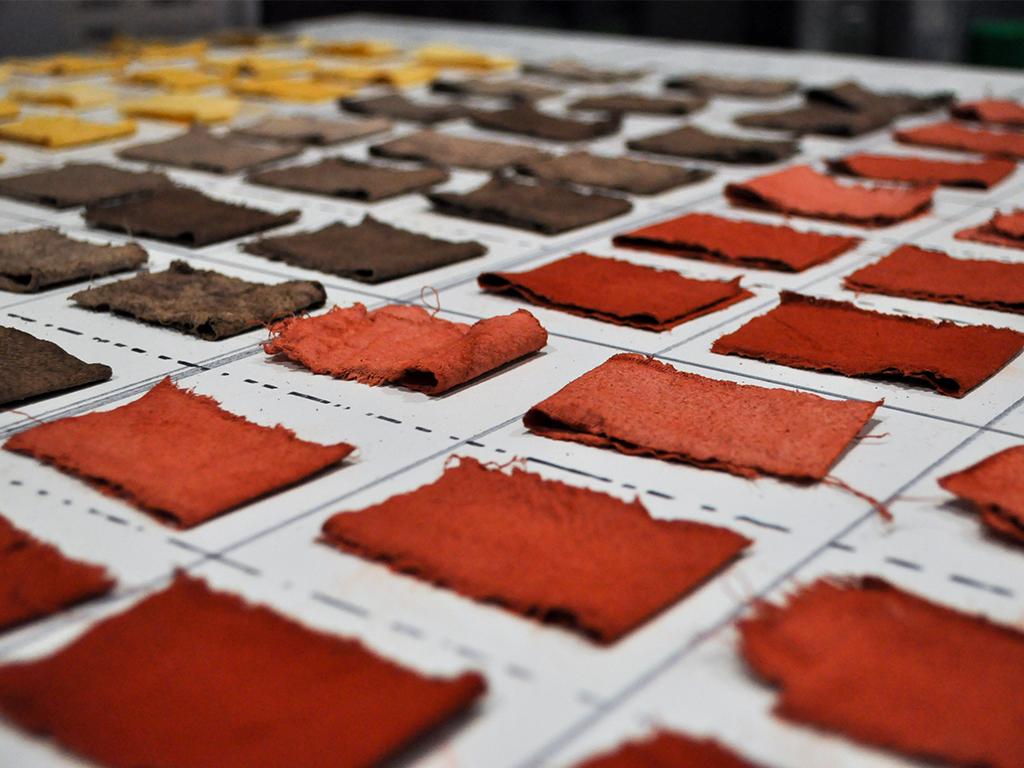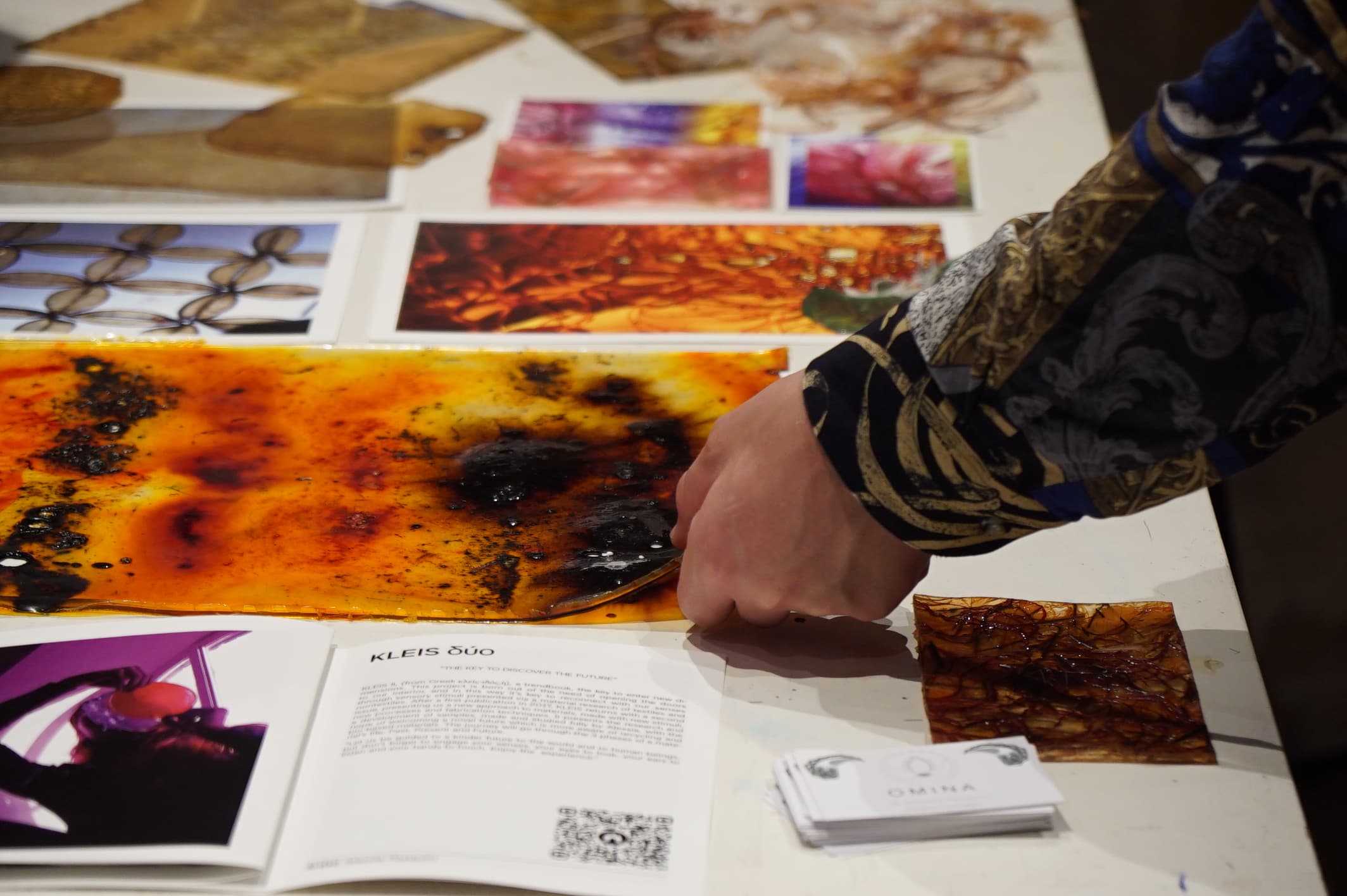Ane Baztarrika researched traditional Japanese pigment dyeing, which uses soybeans and earth pigments, at our TextileLab Amsterdam. This process uses no heating, mordents or chemicals, while still enabling you to dye any type of fabric. Only a few natural ingredients, which can be resourced from the local environment, are used.
Ane’s interest in this topic started during a recent trip to Japan, where she discovered types of natural dyes called Bengala dyes. Bengala dyes are based on traditional techniques using soil-mined pigments, but also include innovative and more durable components. Upon this discovery, Ane decided to take a break from her textile and visual work to research more sustainable ways to dye textiles. This research pushed her to dig deeper into naturally sourcing the ingredients and testing out her hypothesis that they could also be used to dye synthetic fibers.
In her research, Ane wanted to go back to the origin of earth pigments (including natural iron oxides and carbon black from soot) that were used as early as the cave paintings around 30,000 years ago. These early earth pigments have numerous benefits including great colorfastness and UV protection. She also looked into the traditional ways that natural pigment dyes were used and studied the stencil-dyeing technique of Katazome where soybeans are used in two ways: as sizing and pigment-binding agents.
The reason that the cheap and plentiful soybean is such a good sizing agent is because it's rich in protein, which has adhesive-like qualities. Once the liquid is brushed onto the cloth, the protein undergoes a structural change known as denaturation, during which it is rendered insoluble. This process not only makes the sizing permanent, but also helps to reinforce the bond between the fiber and the subsequently applied pigment solution, ensuring good colorfastness. For sizing purposes, the soybean liquid is highly diluted so the effect is little more than a light starching.
In Ane’s experiments at the Wetlab, the first step was to follow the traditional recipe of making gojiru, an uncooked diluted soybean liquid. The liquid is made by fully soaking the beans in water and then grinding them. This process left Ane with the impression that it is hard to estimate and control the percentage of soybeans and water (not to mention the difficulty of avoiding fermentation and its intense smell), which makes it quite unpleasant to work with.
As a result, a second test was conducted using organic soybean powder, during which the beans are first roasted and then made into a powder. Using this method, Ane went on to test specific amounts and percentages of soybean powder for both the sizing and the pigment solution. She used four different earth pigment colours (Yellow Ochre, Burnt Umber, Red English and Black Oxide) in combination with three types of fabric (wool, cotton and polyester) and made a chart with multiple combinations of the amount of soybean powder for the sizing and its amount for the pigment solutions.
Depending on the pigment, there are slight differences in the color intensity, as some seem more affected by the soybean percentage than others. In three weeks time, after the curing process, Ane will test the colorfastness of the different samples’ stability and draw more definite conclusions. However, the results on synthetic fabric are very promising and could lead into developing a natural dyeing process that can dye any fabric or fiber.



